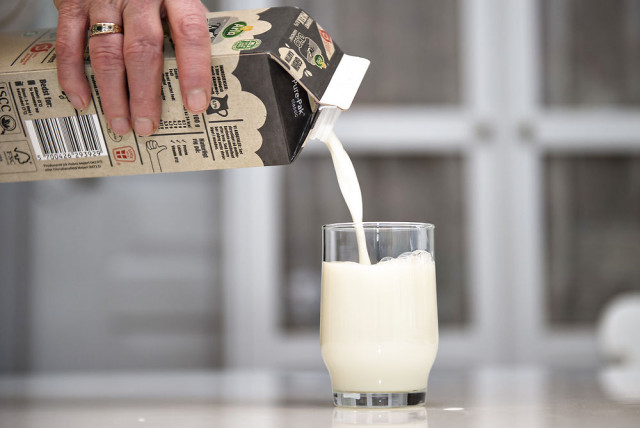More Danish words the world should start using

We asked our readers to send suggestions of their favourite Danish words that could make English or other languages even more expressive.
In a previous article, in which we listed Danish words the world should start using, we asked readers to let us know if we’d missed any words that are so useful, they could become loan words in English – and maybe even end up fully adopted, as was famously the case with 'hygge'.
We received some great suggestions – thank you to everyone who took the time to get in touch! Here’s a selection of your contributions.
Tak for sidst
We’re playing loose with our own definitions here: ‘tak for sidst’ is a phrase, not a word. But we’ve decided to act like mavericks and include it anyway, since it is such a useful expression and entirely absent in English – used to warmly greet someone whose company you recently enjoyed during another evening or event, and literally meaning 'thanks for the last'.
How to use it: “Tak for sidst! Did you get home from the pub okay?”
Kovending
Similar to the colloquial English “pull a U-turn”, kovending means to about-face or take an opposite stance or direction, either figuratively or literally. Its literal translation from Danish is 'cow turning' and has nothing to do with traffic, as far as we’re aware.
How to use it: “Their new policy of increasing tax is a complete kovending”.

Photo: Mads Claus Rasmussen/Ritzau Scanpix
Menneskesyn
This is a great one and doesn’t really have an equivalent in English. A compound of ‘menneske’ (person or human) and ‘syn’ (view or sight), its meaning is close to ‘world view’ but in reference to people or groups.
How to use it: “We could all learn a lot from Gandhi’s menneskesyn”.
Fætter, kusine
Another example of the ability of Danish to be very precise about who is who in your family. Danish has gender-specific words for ‘cousin’: for a male cousin, it’s ‘fætter’, while for a female cousin, ‘kusine’ is used. Danish is yet to follow the example of Swedish or French by introducing more gender-neutral terms, so the difference between these two words is important to remember for learners of the language.
How to use it: “My kusine Maria and my fætter Lucas are actually twins”.
Pyt
A marvellous little word that is used to dismiss something that may not have gone according to plan, but should not be considered a problem. Often heard when somebody is trying to make someone else feel better about a minor error.
How to use it: “I forgot to buy milk.”
“Pyt, we’ll get some in the morning”.

Photo: Henning Bagger/Ritzau Scanpix
Arbejdsglæde
From the Danish words for ‘work’ and ‘happiness’, this is a noun used to describe the feeling of contentment derived from one’s job satisfaction. We wonder whether the existence of this word has any connection with Denmark’s reputation as being one of the world’s happiest countries? Perhaps it’s just a coincidence.
How to use it: “She seems so relaxed these days. Her new job has given her much more arbejdsglæde”.
Forlængerledning
Our previous list had a couple of examples of Danish words that could replace entire phrases in English. This is an example of how Danish creates new nouns by putting two component words together – forlængerledning means ‘extension cable’ in English. We just think it’s a nice-sounding word.
How to use it: “Pass me that forlængerledning, will you? My battery is down to zero again.”
READ ALSO:
Comments
See Also
In a previous article, in which we listed Danish words the world should start using, we asked readers to let us know if we’d missed any words that are so useful, they could become loan words in English – and maybe even end up fully adopted, as was famously the case with 'hygge'.
We received some great suggestions – thank you to everyone who took the time to get in touch! Here’s a selection of your contributions.
Tak for sidst
We’re playing loose with our own definitions here: ‘tak for sidst’ is a phrase, not a word. But we’ve decided to act like mavericks and include it anyway, since it is such a useful expression and entirely absent in English – used to warmly greet someone whose company you recently enjoyed during another evening or event, and literally meaning 'thanks for the last'.
How to use it: “Tak for sidst! Did you get home from the pub okay?”
Kovending
Similar to the colloquial English “pull a U-turn”, kovending means to about-face or take an opposite stance or direction, either figuratively or literally. Its literal translation from Danish is 'cow turning' and has nothing to do with traffic, as far as we’re aware.
How to use it: “Their new policy of increasing tax is a complete kovending”.

Photo: Mads Claus Rasmussen/Ritzau Scanpix
Menneskesyn
This is a great one and doesn’t really have an equivalent in English. A compound of ‘menneske’ (person or human) and ‘syn’ (view or sight), its meaning is close to ‘world view’ but in reference to people or groups.
How to use it: “We could all learn a lot from Gandhi’s menneskesyn”.
Fætter, kusine
Another example of the ability of Danish to be very precise about who is who in your family. Danish has gender-specific words for ‘cousin’: for a male cousin, it’s ‘fætter’, while for a female cousin, ‘kusine’ is used. Danish is yet to follow the example of Swedish or French by introducing more gender-neutral terms, so the difference between these two words is important to remember for learners of the language.
How to use it: “My kusine Maria and my fætter Lucas are actually twins”.
Pyt
A marvellous little word that is used to dismiss something that may not have gone according to plan, but should not be considered a problem. Often heard when somebody is trying to make someone else feel better about a minor error.
How to use it: “I forgot to buy milk.”
“Pyt, we’ll get some in the morning”.

Photo: Henning Bagger/Ritzau Scanpix
Arbejdsglæde
From the Danish words for ‘work’ and ‘happiness’, this is a noun used to describe the feeling of contentment derived from one’s job satisfaction. We wonder whether the existence of this word has any connection with Denmark’s reputation as being one of the world’s happiest countries? Perhaps it’s just a coincidence.
How to use it: “She seems so relaxed these days. Her new job has given her much more arbejdsglæde”.
Forlængerledning
Our previous list had a couple of examples of Danish words that could replace entire phrases in English. This is an example of how Danish creates new nouns by putting two component words together – forlængerledning means ‘extension cable’ in English. We just think it’s a nice-sounding word.
How to use it: “Pass me that forlængerledning, will you? My battery is down to zero again.”
READ ALSO:
Join the conversation in our comments section below. Share your own views and experience and if you have a question or suggestion for our journalists then email us at [email protected].
Please keep comments civil, constructive and on topic – and make sure to read our terms of use before getting involved.
Please log in here to leave a comment.